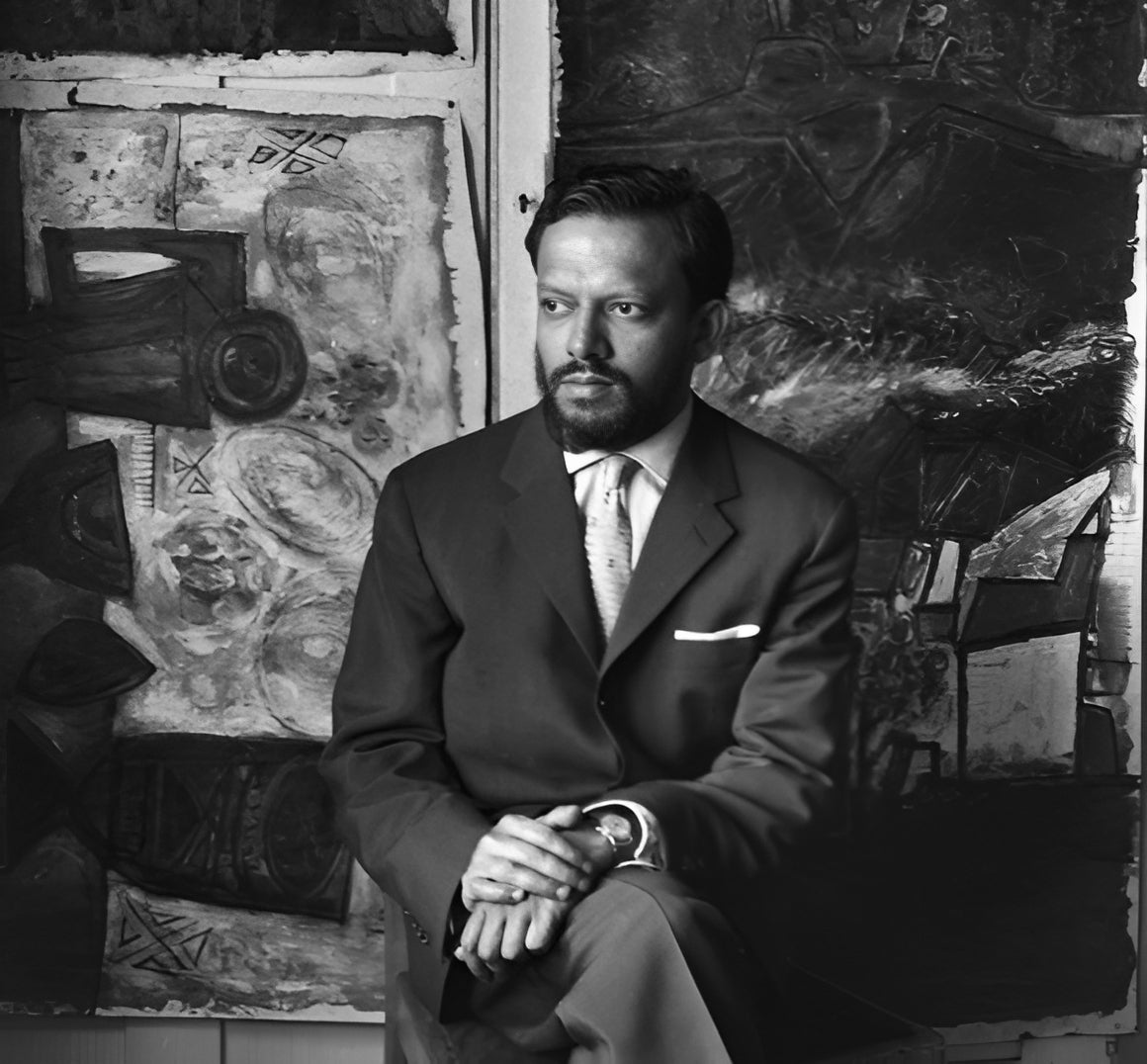
FRANCIS NEWTON SOUZA
Francis Newton Souza painted with a fury that seemed to tear through canvas and convention alike. Unapologetically confrontational, his work crackled with defiance, against authority, against social hypocrisy, against aesthetic complacency. Scarred physically by childhood illness and marked psychologically by early trauma, Souza shaped a visual language that was abrasive, erotic, and unfiltered. His line was both weapon and confession, etched with sharp crosshatching that built muscular, often grotesque forms capable of seducing and repelling in equal measure.
The figure was central to his practice, particularly the human body, nudes, priests, lovers, mothers, Christ-like martyrs, all rendered with a ferocity that made beauty and brutality inseparable. Souza’s compositions bristled with tension, not only in their subject matter but in their aggressive brushwork and volatile contrasts. His vocabulary drew from an eclectic range: Goan folk traditions, Catholic ritual, European modernism, Biblical narratives, and the masters of the Renaissance. These elements didn’t coexist peacefully, they collided. The result was a body of work that was restlessly inventive, often controversial, and impossible to ignore.
Expelled from Sir J. J. School of Art for his involvement in the Quit India Movement, Souza carried his spirit of rebellion into every aspect of his practice. In 1947, he co-founded the Progressive Artists’ Group, signaling a decisive break from colonial academicism and a commitment to global modernism. His move to London in 1949 placed him at the heart of the postwar art world, where his raw, expressionistic style sharply contrasted with the prevailing decorum of British painting. Exhibitions at Gallery One and acclaim from critics like David Sylvester positioned him as a provocative new voice. Souza was not interested in politeness. He used distortion to challenge piety, eroticism to question morality, and religious imagery to expose institutional rot. His paintings were charged with complex emotions, anger, desire, alienation, anchored by a technical command that gave even his wildest compositions structure and force. His output remained prolific until his death in 2002, spanning painting, drawing, writing, and polemic.
Few artists carved a path as unapologetically singular as Souza. He didn’t seek approval, he sought truth, however uncomfortable or unseemly. That rawness, still electric decades later, is what continues to draw viewers to his work: a brutal honesty rendered through line, body, and faith, scorched into modern art history.

